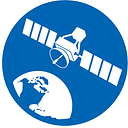Member-only story
NADIR Images and Oblique Images in Remote Sensing
What is the difference between NADIR Images and Oblique Images?
NADIR images and oblique images are two types of aerial images that are used in remote sensing and GIS applications. NADIR images are taken directly from above, while oblique images are taken from an angle. Here is a brief overview of the differences between NADIR and oblique images and how to identify them:
1. NADIR images:
NADIR images are taken with the camera pointed directly downwards at a 90-degree angle to the ground. These images provide a top-down view of the area being imaged and are commonly used in applications such as mapping, land use analysis, and disaster response. In NADIR images, objects appear as they would if viewed from directly above, without any distortion caused by the camera angle.
To identify NADIR images, you can look for metadata associated with the image that provides information on the camera angle and sensor position. In most cases, NADIR images will have a camera angle of 0 degrees and a sensor position directly above the area being imaged.
2. Oblique images:
Oblique images are taken from an angle, rather than directly above. These images provide a more three-dimensional view of the area being imaged, with objects appearing tilted and angled based on the camera position. Oblique images are commonly used in applications such as urban planning, 3D modeling, and environmental monitoring.
To identify oblique images using code, you can look for metadata associated with the image that provides information on the camera angle and sensor position. In most cases, oblique images will have a camera angle greater than 0 degrees and a sensor position that is not directly above the area being imaged.
In addition to metadata, you can also visually inspect the image itself to determine…
